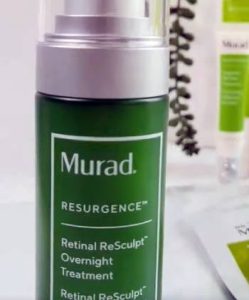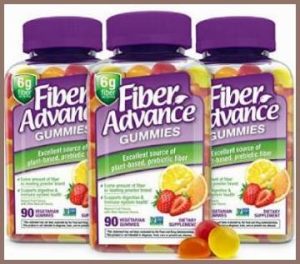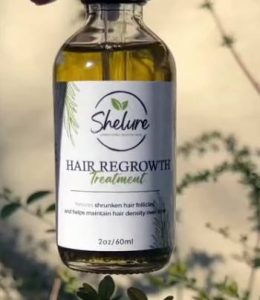I’ve always been curious about the buzz surrounding collagen supplements.
From glowing skin to stronger joints, the promises are hard to ignore. But standing in the supplement aisle, I’m faced with a choice: collagen or collagen peptides?
Or maybe something like Beyond Collagen? My goal in this article is to unpack these options, sharing my insights as a skeptical yet hopeful consumer.
I’ll break down their differences, weigh their pros and cons, and help you decide what’s worth your money for healthier skin, joints, and more.
Comparison Table: Collagen Vs. Collagen Peptides Vs. Beyond Collagen
| Feature | Collagen | Collagen Peptides | Beyond Collagen |
| Form | Whole protein, often gelatin | Hydrolyzed, small peptides | Hydrolyzed peptides + extras |
| Source | Bovine, porcine, marine | Bovine, porcine, marine | Bovine, marine + vitamins |
| Absorption | Poor, requires digestion | High, easily absorbed | High, enhanced with nutrients |
| Primary Use | Cooking, structural support | Skin, joints, hair, nails | Skin, joints, overall wellness |
| Ease of Use | Less versatile, gels in water | Mixes easily in drinks/food | Mixes easily, often flavored |
| Cost per Serving | $0.50–$1.50 | $1.00–$2.50 | $1.50–$3.00 |
| Added Ingredients | Minimal, if any | Sometimes vitamin C | Vitamins, minerals, hyaluronic acid |
| Taste | Neutral to meaty | Neutral, often flavorless | Often flavored (e.g., vanilla) |
| Best For | Budget, cooking enthusiasts | Targeted health benefits | Premium, all-in-one solution |
My First Encounter with Collagen
A few years ago, I noticed my skin wasn’t as bouncy as it used to be. Fine lines crept in, and my knees creaked during morning runs.
A friend swore by collagen supplements, claiming they turned back the clock on her skin and joints.
Intrigued, I bought a tub of collagen powder, only to realize later it was whole collagen—think gelatin, the stuff in Jell-O.
It clumped in my coffee and tasted vaguely like broth. That’s when I learned the hard way: not all collagen is created equal.
Collagen is the body’s most abundant protein, making up about 30% of our total protein.
It’s the glue holding our skin, bones, tendons, and cartilage together. As we age, our natural collagen production drops—by about 1% per year after our 20s, and even more for women post-menopause.
This decline leads to wrinkles, brittle nails, and achy joints. Supplements aim to replenish this loss, but the form matters.
Whole collagen, collagen peptides, and products like Beyond Collagen each serve different purposes. Let’s explore what sets them apart.
Understanding Collagen: The Basics
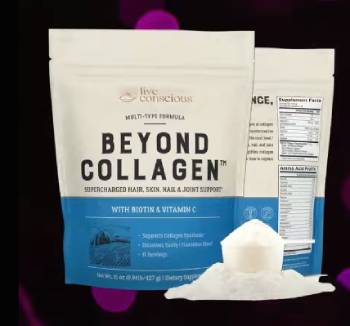
When I first started researching, I thought collagen was just one thing.
Wrong. It’s a family of proteins, with 28 types identified, though types I, II, and III dominate supplements.
Type I is in skin, bones, and tendons; type II is in cartilage; type III supports skin and blood vessels.
Whole collagen, often sold as gelatin, comes from animal sources like bovine (cow), porcine (pig), or marine (fish).
It’s a complete protein, meaning it contains all the amino acids our bodies need, but it’s tough to digest.
I tried using whole collagen in recipes, like homemade gummies or bone broth.
It’s affordable—sometimes as low as $0.50 per serving—and great for cooking because it gels when mixed with water. But for daily supplementation?
It’s a hassle. It doesn’t dissolve easily in cold drinks, and my body can only absorb a small fraction of it.
Studies suggest whole collagen’s large molecular structure makes it less bioavailable, meaning most of it passes through your system unused.
Collagen Peptides: The Game-Changer
Frustrated with whole collagen, I switched to collagen peptides, also called hydrolyzed collagen. These are collagen molecules broken down through hydrolysis into smaller chains of amino acids.
Think of it like pre-digesting the protein for your body. The result? A powder that dissolves effortlessly in hot or cold liquids, with a neutral taste that doesn’t ruin my morning smoothie.
I noticed a difference within weeks. My skin felt more hydrated, and my nails, which used to peel, grew stronger.
Research backs this up: a 2019 study found that 2.5–10 grams of collagen peptides daily improved skin hydration and elasticity in older adults. Another study showed reduced joint pain in athletes taking 5–10 grams daily.
The key is bioavailability—collagen peptides are absorbed quickly into the bloodstream, delivering amino acids like glycine, proline, and hydroxyproline to where they’re needed.
Collagen peptides come in various forms: powders, capsules, and even gummies. Powders are the most popular, with brands like Vital Proteins and Sports Research offering 10–20 grams per scoop.
They’re pricier than whole collagen—around $1–$2.50 per serving—but the convenience and results justify the cost for me. I mix a scoop into my coffee or oatmeal daily, and it’s become a seamless part of my routine.
Pros and Cons of Collagen Peptides
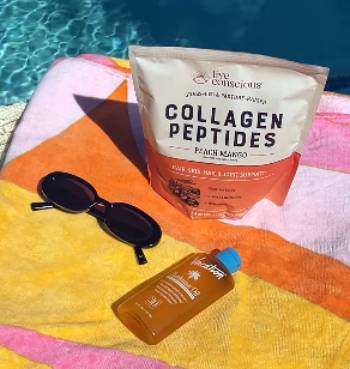
Pros of Collagen Peptides
- High bioavailability: Easily absorbed for maximum benefits.
- Versatile: Mixes into drinks, smoothies, or recipes without clumping.
- Proven benefits: Supports skin elasticity, joint health, and nail strength.
- Neutral taste: Doesn’t alter the flavor of your food or drinks.
Cons of Collagen Peptides
- Higher cost: More expensive than whole collagen.
- Incomplete protein: Lacks tryptophan, so it’s not a full protein source.
- Animal-derived: Not suitable for vegans or vegetarians.
- Limited research: Long-term effects need more study.
Beyond Collagen: The All-in-One Promise
Then I stumbled across Beyond Collagen, a premium supplement that takes collagen peptides to the next level.
Brands like Ancient Nutrition and NeoCell market these as “collagen plus” formulas, blending hydrolyzed collagen with extras like vitamin C, hyaluronic acid, biotin, or probiotics.
The pitch? A one-stop shop for skin, hair, joints, and even gut health.
I tried Ancient Nutrition’s Multi Collagen Protein, which includes types I, II, III, V, and X collagen, plus vitamin C and probiotics.
It dissolved as easily as regular peptides, and the vanilla flavor made my smoothies taste like dessert.
After a month, my skin felt plumper, and my digestion seemed smoother—though I can’t say if it was the collagen or the probiotics.
The added ingredients make sense: vitamin C boosts collagen synthesis, and hyaluronic acid supports skin hydration, per a 2021 study showing wrinkle reduction with 120 mg daily.
But Beyond Collagen isn’t cheap. At $1.50–$3 per serving, it’s a splurge. I also wondered if I needed all the extras.
Could I just take a separate vitamin C pill and save money? Plus, flavored versions sometimes include sweeteners like stevia, which I don’t love. Still, the convenience of an all-in-one formula is tempting for busy days.
Also Read: My Experience With Sports Research Collagen Peptides
Pros and Cons of Beyond Collagen

Pros of Beyond Collagen
- Enhanced formula: Includes nutrients like vitamin C and hyaluronic acid.
- Multi-type collagen: Targets skin, joints, and connective tissues.
- Convenient: Combines multiple supplements into one product.
- Pleasant taste: Flavored options make daily use enjoyable.
Cons of Beyond Collagen
- Expensive: Higher cost per serving than standard peptides.
- Added ingredients: May include sweeteners or allergens like coconut.
- Overhyped claims: Benefits of extras like probiotics need more research.
- Not vegan: Like other collagens, it’s animal-derived.
Breaking Down the Science: What Works?
As an analytical type, I dug into the research to separate fact from hype. Collagen peptides have the most evidence.
A 2018 meta-analysis of 19 studies found significant improvements in skin hydration, elasticity, and wrinkle depth after 3 months of peptide use.
For joints, a 2021 study showed 5 grams daily reduced knee pain in active adults.
Osteoporosis? A year-long trial reported increased bone density in postmenopausal women taking 5 grams of peptides daily.
Whole collagen, like gelatin, lacks similar data. Its large molecules mean less gets absorbed, so benefits are minimal unless you’re using it for cooking.
Beyond Collagen’s added ingredients show promise—vitamin C and hyaluronic acid have solid studies—but the multi-collagen blends (types I, II, III, etc.) don’t have enough research to prove they’re better than single-type peptides.
Some experts argue the body breaks down all collagen into the same amino acids, regardless of type.
I also learned collagen isn’t a magic bullet. Lifestyle matters. Smoking, sun exposure, and poor sleep can deplete collagen faster than supplements can replenish it.
Pairing peptides with a diet rich in vitamin C (think oranges or bell peppers) and zinc (like nuts or seafood) maximizes results, since these nutrients support collagen synthesis.
Also Read: My Thoughts On NativePath Collagen Peptides
My Experience: What I Noticed
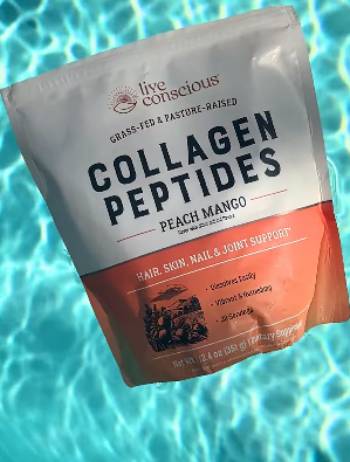
After experimenting with all three, here’s my take. Whole collagen was a bust for supplementation—too much hassle for too little payoff.
I still use it for cooking, like making bone broth or gummies, because it’s cheap and adds protein to recipes. Collagen peptides became my go-to.
I stick with an unflavored powder (Vital Proteins is my favorite) for its versatility and consistent results.
My skin looks brighter, and my joints feel less cranky after workouts.
Beyond Collagen was a fun experiment. The added nutrients made me feel like I was doing something extra for my health, but the price tag stung.
I noticed slightly better skin hydration, but nothing dramatic enough to justify the cost long-term. If you’re after convenience and don’t mind spending more, it’s a solid choice.
Choosing What’s Right for You
Your decision depends on your goals, budget, and lifestyle. If you’re on a tight budget or love cooking, whole collagen (gelatin) is a practical pick for recipes but won’t do much for your skin or joints.
Collagen peptides are the sweet spot for most people—effective, easy to use, and backed by science.
Go for a reputable brand with third-party testing (like NSF or Informed Choice) to ensure purity.
Beyond Collagen suits those who want a premium, all-in-one product and don’t mind paying for it.
It’s great if you’re targeting multiple benefits (skin, joints, gut) and prefer flavored options. Just check the ingredient list for potential allergens or additives you might not want.
Here’s my advice: start with 5–10 grams of collagen peptides daily for 2–3 months. Track changes in your skin, nails, or joints.
If you love the results but want more, try a Beyond Collagen formula. Whatever you choose, consistency is key—collagen supplements take weeks to show effects.
Addressing the Hype: Is It Worth It?
I’ll be honest—collagen supplements are overhyped in some circles. Influencers and celebrities (looking at you, Jennifer Aniston) rave about them, but they’re not a cure-all.
The science is promising but not conclusive, especially for hair and nail growth.
A 2017 study showed minor improvements in nail brittleness with 2.5 grams daily, but hair benefits are mostly anecdotal.
That said, I’ve seen enough personal and research-backed benefits to keep peptides in my routine.
They’re not a substitute for a healthy diet or skincare regimen, but they’re a solid addition if you’re noticing signs of aging or joint discomfort. Just don’t expect miracles overnight.
Also Read: My Experience With Physician’s Choice Collagen Peptides
Frequently Asked Questions (FAQs)
Collagen peptides are hydrolyzed collagen, broken down for easy absorption, targeting skin, joints, and nails. Beyond Collagen is a premium version, blending peptides with extras like vitamin C, hyaluronic acid, or probiotics for broader health benefits.
Collagen peptides are better for supplementation due to their high bioavailability and ease of use. Whole collagen (gelatin) is less absorbable and better suited for cooking.
Vital Proteins and Sports Research are top picks for their third-party testing and high peptide content. Effectiveness varies by individual, so choose based on your needs and budget.
Jennifer Aniston has endorsed Vital Proteins, reportedly using their collagen peptides in her daily routine for skin and joint health.
Final Thoughts
I’ve shared my journey through the collagen maze, and now it’s your turn to decide.
Whether you stick with budget-friendly whole collagen for cooking, embrace collagen peptides for targeted benefits, or splurge on Beyond Collagen for a premium boost, the choice is yours.
You deserve to feel confident in your supplement pick, so weigh your goals, budget, and lifestyle.
With consistency and a bit of patience, you can support your skin, joints, and overall wellness. What’s your next step? Grab a scoop and start experimenting—you’ve got this!

